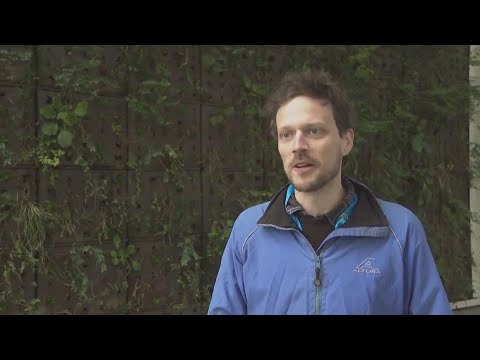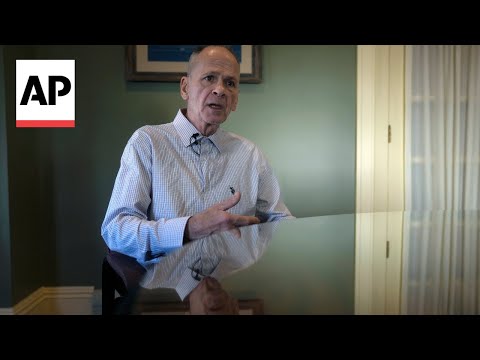(19 Apr 2024)
RESTRICTION SUMMARY:
ASSOCIATED PRESS
Vienna – 19 April 2024
1. Wide of people in walkway leading to conference centre
2. Mid of screen showing moving text reading (English): "Welcome to the EGU (European Geosciences Union) General Assembly"
3. Close of people walking
4. Mid of PhD researcher at Imperial College Edward Gryspeerdt walking past
5. SOUNDBITE (English) Edward Gryspeerdt, PhD researcher at Imperial College:
"So, it’s an unusual weather event, there’s no doubt about that. This was a huge amount of rain for the region and something that was not necessarily expected. What we do know is that we are, in this region, climate models suggest that heavy rain is likely to increase into the future and while it’s difficult to attribute any kind of single event – particularly rainfall event – to climate change like this, all we know (is) that we would expect to see more events like this going into the future."
6. Gryspeerdt’s hands
7. SOUNDBITE (English) Edward Gryspeerdt, PhD researcher at Imperial College:
"So these cloud seeding experiments typically are aiming at relatively small enhancements in the amount of rainfall, partly because you cannot create big thunderstorms like this out of nothing. So while cloud seeding is being trialled in the region, there is very limited evidence to suggest how well it works and that makes it, in this case, quite unlikely that this event was due to cloud seeding."
8. Gryspeerdt’s hands
9. SOUNDBITE (English) Edward Gryspeerdt, PhD researcher at Imperial College:
"So the problem with cloud seeding is that it’s very difficult to determine how well it works. As soon as you modify that cloud or have done something to it, you no longer have a cloud to compare it to to see what would happen and rainfall in particular is very intermittent – it varies a lot in different regions. So it can be raining in one place and not another. Was that the result of your cloud seeding or not? That makes it very difficult to tell and particularly when you’re looking for these small changes in overall rainfall, that can make it very difficult to say how well this kind of cloud seeding process or tactic could work in reality."
10. Person walking past sign reading (English): "Welcome to EGU"
11. Entrance to conference centre
12. SOUNDBITE (English) Edward Gryspeerdt, PhD researcher at Imperial College:
"So we would absolutely expect that as these events are becoming more common as we head into the future, countries will have to adapt to deal with future extreme weather events due to climate change."
13. Various of people walking out of the conference centre
STORYLINE:
A cloud expert from Imperial College, London has negated the idea that the practice of cloud seeding is responsible for heavy thunderstorms which hit Dubai and the wider region this week.
"You cannot create big thunderstorms like this out of nothing. So while cloud seeding is being trialled in the region, there is very limited evidence to suggest how well it works," Edward Gryspeerdt told The Associated Press.
He spoke on the sidelines of the European Geosciences Union on Friday.
The UAE, a hereditarily ruled, autocratic nation on the Arabian Peninsula, typically sees little rainfall in its arid desert climate.
However, a massive storm forecasters had been warning about for days blew through the country’s seven sheikhdoms.
By the end of Tuesday, more than 142 millimeters (5.59 inches) of rainfall had soaked Dubai over 24 hours.
AP video shot by Philipp Jenne
===========================================================
Find out more about AP Archive: http://www.aparchive.com/HowWeWork
Twitter: https://twitter.com/AP_Archive
Facebook: https://www.facebook.com/APArchives
Instagram: https://www.instagram.com/APNews/
You can license this story through AP Archive: http://www.aparchive.com/metadata/youtube/5eb0967fc5564521ae5899a59c1bea4c





